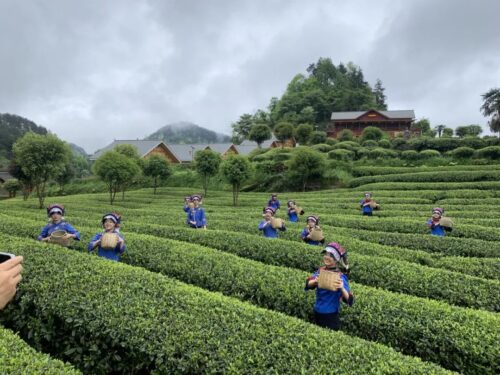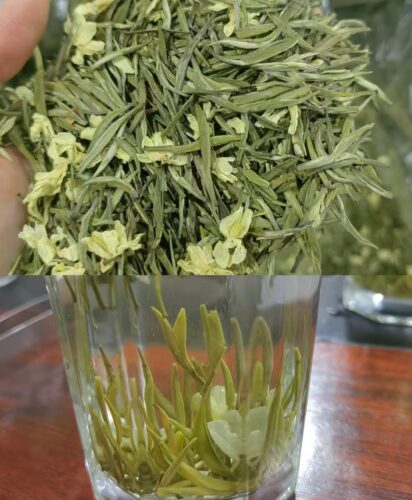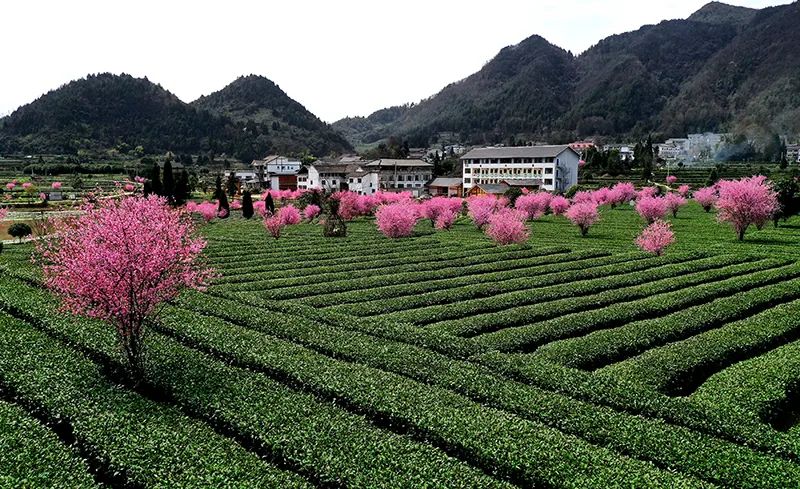best introduction of fenggang Zinc Selenium organic Tea
Best introduction of fenggang Zinc Selenium organic Tea
Fenggang tea rich in zinc and selenium
Fenggang County is located in the northeast of Guizhou Province, on the north bank of the Wujiang River, the average sea level is 900 meters, and the forest coverage rate of the tea area is 80%. The air is fresh all year round, the climate is mild, belongs to the subtropical humid monsoon climate. The territory is a typical karst dissolved mountainous area with dense hills, gullies, loose soil texture and rich organic matter content, which is especially suitable for the growth and development of tea trees. “Fenggang zinc selenium tea” is produced in this special land.
introduction
Fenggang zinc-rich selenium-rich tea Fenggang zinc-rich selenium-rich tea, produced in Fenggang County, Guizhou province. Fenggang has a long history of tea production, which is recorded by Lu Yu, the tea sage, in the Book of Tea. Fenggang zinc-selenium rich tea has the characteristics of green color, bright soup color, mellow taste, fresh green leaf base and so on. In January 2006, AQSIQ approved the implementation of geographical indication product protection for Fenggang Zinc-rich selenium-rich tea.
Historical origin
Fenggang has a long history of tea production. Lu Yu, a tea sage in the Tang Dynasty, wrote in the eight chapters of the world’s first tea book, The Book of Tea: “In the middle of Guizhou, there were born Sizhou, Bozhou, Feizhou, Yizhou… Often get, its taste is excellent “, according to research, Yizhou government is now Fenggang County Suiyang Town. “Pingyi produces tea honey” in the Song Dynasty “Huayang State Records”, “Yizhou, Bozhou and Sizhou take tea as tribute” in the music history “Taiping World Records”, and “Longquan produces cloud and mist tea with both color and taste” in the Qing Dynasty “Meiyi Essay”, “Yizhou, Sizhou and Longquan all refer to the present Fenggang area. [1]
Development status
Since 2002, under the guidance of the strategic thought of “Building ecological homes and developing green industries” by the county Party Committee and the county government, the county has made full use of the advantages of ecological resources, adopted the circular economic development model of “pig-bog-tea”, and built 173,000 mu of ecological tea gardens with tea in the forest, trees in the tea and tea forests in the suitable altitude mountains and hilly areas. Among them, 60,000 mu of tea gardens were put into production, and the output was 2,500 tons in 2008, and the comprehensive income of the tea industry was 300 million yuan. In 2004, Fenggang County was awarded the title of “China’s Zinc-rich Se-rich organic Tea Town” by the Local Committee of China’s Special Products. [1]

Origin environment
Tea farmers are picking Fenggang tea rich in zinc and selenium [2] The average sea level in Fenggang County is 720 meters, and the terrain is high in the west and low in the east, which is the transition zone from Dalou Mountains to Wuling Mountains. The average annual temperature is 15.2℃, the extreme maximum temperature is 37.8℃, the extreme minimum temperature is -7.4℃, the frost-free period is 277 days, the annual average accumulated temperature is 5548℃, the annual sunshine duration is 962.4 ~ 1349 hours, the annual average sunshine duration is 1139 hours, the annual average rainfall days are about 180 days, and the precipitation is 1257.21mm. It belongs to the subtropical humid monsoon climate and ADAPTS to the growth and development of various crops. The county’s surface water resources are collected by 315 tributaries into five major rivers, with a total length of 1229.6 kilometers and surface runoff of 1.172 billion cubic meters; Groundwater resources are 257 million cubic meters; At present, there are 986 water conservancy engineering facilities, with a designed irrigation area of 160,000 mu, accounting for 70% of the total area of the field, among which the effective irrigation area is 132,000 mu, accounting for 57.7%, and the protected irrigation area is 125,000 mu, accounting for 54.7%. The county is a typical karst dissolved mountainous area, low mountain hills, low mountain deep cut landform, the soil is mainly distributed in yellow soil, lime soil, purple soil, paddy soil four soil categories, 11 subcategories, 45 soil genera, 113 soil species. In 2004, the soil and tea (green tea and dry tea) in Fenggang planning area were tested by Guizhou Institute of Physical and Chemical Testing and the Center of physical and chemical testing of Guizhou Normal College. The content of zinc and selenium in the soil of Fenggang County was 95.3 mg/ kg and 2.5 mg/ kg respectively. The zinc content in tea is 40 ~ 100mg/ kg, and the selenium content is 0.25 ~ 3.50mg/ kg, which is completely derived from the natural adsorption of zinc and selenium in soil by tea tree. Zinc is known as the “spark of life”, and selenium has the reputation of “moon element” and “marriage harmonizer”. There are 288,000 mu of suitable tea land in the county, including 103,000 mu of fields, 97,000 mu of soil and 18,000 mu of forest land. The suitable tea land is between 500m and 1200m above sea level, and mostly yellow soil, the depth of the soil is 80-200cm, the PH value is 4.5-6.5, the fertility is medium, and the organic matter content is rich.
Development course
intro
Although Fenggang County has a long history of tea growing, but because the tea farms before the Qing Dynasty were mainly run by the government, few people planted tea, and the tea production basically did not develop in modern times due to various reasons. Before 1949, there were no tea plantations in Fenggang, only scattered tea bushes and wild tea trees. In 1958, in order to solve the contradiction between supply and demand of drinking tea, the county people’s government mobilized the masses to open up tea gardens in Shuihe Village, and founded the first communally-run tea farm, in order to promote the development of tea production in the county. The development of tea industry in Fenggang County has experienced three stages.
Recovery phase
Recovery period (1949-1981) : After liberation, the government implemented the unified purchase and marketing of tea production, and the tea production in my county was restored. During the period, 17 tea farms were founded, and the tea garden area developed to 23,000 mu. However, the layout was scattered, the scale was small, the per unit yield was low, the processing equipment was simple, and the technology was simple.
Wandering stage
Lingering stage (1982-1999) : This stage is the period of transition from planned economy to market economy, the production, supply and marketing system has changed, and the market and the construction of tea garden base have become the problems that tea people must face. In 1987, the county Tea Company was established to implement integrated management of the development, production, processing and sales of tea in the county, and the tea production was consolidated. Adopt the company to build a base model, the new tea garden 12000 mu, but due to lack of funds, inability to manage and protect the reasons, to achieve the retention of only 5000 mu, in 1999, the tea garden area of 28,900 mu. The main products are “Fengquan snow sword”, “Maofeng”, “Maojian”, “zinc rich selenium rich green tea” and other famous teas, registered “Xianrenling”, “Langzhu” trademarks, honed a number of tea people to adapt to market development. During this period, the tea industry was consolidated and improved, participated in the real estate tea garden transformation technology research project organized by the provincial Department of Agriculture and the provincial Science and Technology Committee, and was awarded the “First Prize in Research” by the province, and Fenggang was listed as one of the top ten tea producing counties in Guizhou Province.

Development stage
Development stage (2000 to present). In November 2002, Fenggang County set up the tea industry office, the county government designated a deputy county leader to focus on the tea industry, and set up a tea production leading group, responsible for organizing, leading and coordinating the production of tea in the county. In 2005, Fenggang County Party Committee and the county people’s Government issued the Implementation Rules for Encouraging and Supporting cadres and workers, urban residents, individual industrial and commercial households, and private owners to participate in the Construction of pig and tea Industry. In 2006, the Seventh Party Congress of Fenggang County Committee of the Communist Party of China and the 14th People’s Congress of Fenggang County put forward the idea of industrial structure adjustment of “strong tea, strong tobacco, healthy livestock, stable grain, and heavy special”, and established the tea industry as the preferred industry and pillar position in the construction of ecological agriculture. In 2007, the county people’s Government issued the “Opinions on Adjusting the Development policy of the Tea Industry”, and decided to invest 10 million yuan annually within five years to support the construction of tea bases, production and processing and brand building. In January 2008, the fifth Plenary session of the tenth session of the Fenggang County Committee of the Communist Party of China passed the Decision on Accelerating the development of the tea Industry, which clearly stated: By 2012, to achieve the tea garden area of 250,000 mu, to ensure that by 2015, the county put into production of tea gardens to reach 200,000 mu, in order to drive and radiate development, Fenggang County into a high-quality green tea export county and the national famous green tea base county, to achieve the goal of “tea to enrich the people, tea to rejuvenate the county”. In 2008, the county people’s Government issued the “Several Opinions on the Development Policy of the tea Industry in 2008” and decided to integrate more than 20 million yuan of funds for the development of the tea industry. As the main content of Fenggang new rural construction and the starting point of modern agriculture, the good development trend of tea industry has been highly concerned by the state, province and city. In 2007, it was listed as a pilot county for the integration of national financial support for agriculture funds, which more effectively promoted the leap-forward development of Fenggang tea industry.
Quality characteristics
Fenggang zinc-rich selenium-rich tea Maojian tea rope is tight, Cui bud tea flat straight smooth, green color, clear aroma, green and bright soup color, mellow taste, leaf bottom fresh green. Tea is rich in 17 kinds of amino acids required by the human body and a variety of trace elements such as zinc and selenium, including zinc content 40mg/ kg-100mg /kg, selenium content 0.25mg/ kg-3.5mg /kg.
Product honor
In May 2005, “Fenggang zinc selenium Tea” was rated as the top ten famous tea in Guizhou; In January 2006, “Fenggang Zinc-rich selenium-rich tea” was protected by AQSIQ as a geographical indication product. Since 2006, Fenggang zinc and Selenium tea has won in tea competitions (events) such as “Chinese Tea Cup”, “Chinese Green Cup” and China International Tea Industry Expo, and has won 17 gold awards and 5 silver awards. The inherent quality of “zinc, selenium and organic” in one has been praised by academician Chen Zongmao, President Yu Guanting, Mr. Lin Zhi, Professor Wang Zhiyuan and other tea experts. With the introduction of a series of preferential and encouraging policies by the central, provincial and municipal governments, and the increase of investment promotion, Fenggang zinc-selenium rich tea has become a representative of “Guizhou tea out of the mountain”.







